The Brookman Building, built in 1900-1903, was the first purpose-built home of the South Australian School of Mines and Industries, which became part of the University of South Australia in 1991. The stately building is at the corner of Frome Street and North Terrace, Adelaide.
Establishment
The Brookman Building was the first purpose-built home of the South Australian School of Mines and Industries, was located on a site that was previously the eastern annexe of the Exhibition Building. At the building’s opening in 1903 only the main hall was named after George Brookman: a plaque dedicated to him is in the hall. Brookman Building in Grenfell Street, Adelaide was his business headquarters.
Moves to establish the school had gained momentum in 1886 when the government began examining the best means of developing technical and agricultural education in the colony. There was a recognition that a system of further formal education was required to meet the changing needs of primary and secondary industry. At that time the state only provided comprehensive primary education. Secondary education was largely private and, together with the University of Adelaide, accessible only to a privileged few. Apprenticeship training was primarily on-the-job instruction.
The enquiry’s final report in 1888 recommended establishing a School of Mines and Industries in Adelaide, first and foremost to encourage informed and legitimate investment in mining ventures to prevent ‘rapidly succeeding booms and collapses’. It concluded that technical education was also needed for new mining development and to support agriculture and manufacturing. The enquiry contrasted technical education with education offered by the university and the Fine Art School. It argued that those institutions taught science and art largely for the sake of culture and general improvement, whereas a technical school would pursue science and art ‘only as ministers to industry’. The report suggested that a technical school would complement the university and art school by popularising science and art, leading to ‘novel inventions’ and ‘apter designs’.[1]
The government wasted no time in implementing the findings of the enquiry. It created the South Australian School of Mines and Industries to provide a range of technical education leading to apprenticeship completion and associate diplomas. Opportunities were also available for students to complete their studies at the university and obtain a degree. A representative School Council of12 councillors, including government appointees and representatives of the university, Public Library, Chamber of Manufactures and United Trades and Labor Council (UTLC), was formed on 30 November 1888. The first president was medical practitioner, ardent federationist and parliamentarian Sir John Cockburn. Physician and anthropologist Walter Edmund Roth was the first director (1889–90).
Government financial support for technical education was limited. The funds allocated did not enable free public education. The initial course fees were set at £6 6s per annum. However, the UTLC argued that these were prohibitive to ‘all save the favoured classes’. It maintained that ‘the institution was supposed to be a help for the working classes and apprentices, and it was necessary that the fees should be lower’. The South Australian Advertiser on 9 March 1889 reported the UTLC’s resolve that the annual fees be reduced to £4 4s.
Classes commenced in the eastern annexe of the Exhibition Building on 14 March 1889 with 26 students enrolled in a curriculum of 11 subjects.
[1] SAPP33:1888, ppvii, viii
Inaugural celebration
A ceremony to celebrate the founding of the School of Mines and Industries was held on 8 June 1889. Sir John Cockburn presided, while the formal opening of the school was performed by the Governor of South Australia, the Earl of Kintore. Cockburn reported that 100 students had enrolled already. The most popular courses were dressmaking, carpentry, geology and senior mathematics. Other speakers included Sir Samuel Way (chancellor of the University of Adelaide), Adam Adamson (president of the Chamber of Manufactures) and David Morley Charleston MLC (president of the UTLC). Proceedings were followed by a promenade concert in the Exhibition Building’s grounds, with music provided by the Police Band.
When Cockburn resigned on 15 July 1889 councillors Sir Charles Todd and Sir Langdon Bonython nominated to replace him. Todd subsequently withdrew his nomination and Bonython took up the position of president, which he would hold for the next 50 years.
Donation enables new premises
The school became cramped very soon. Consequently, in November 1889 the government allocated the whole of the basement of the Exhibition Building to it. Offices, classes, laboratories and workshops were accommodated in this dark and enclosed facility. The school’s Technological Museum was also housed in the basement. The museum’s honorary curator in the early 1900s was Dr Herbert Basedow whose career included work as a medical practitioner, anthropologist, geologist, explorer and parliamentarian.
The unpleasant and limited space prompted the School Council to press for premises of its own. But the funding for such an enterprise could not be obtained from government during the 1890s depression. Council members then approached South Australian merchant, sharebroker and financial agent George Brookman for a substantial donation to the School of Mines Building Fund.
Sir George Brookman (1850–1927) was born in Glasgow, Scotland and migrated to South Australia with his family in 1852. He worked for D & J Fowler before setting up a grocery business in Adelaide. Prompted by promising gold finds in Western Australia, Brookman formed the Adelaide Prospecting Party (later the Coolgardie Gold Mining and Prospecting Syndicate), which developed successful mines in Western Australia. The voluntary liquidation of the syndicate in 1898 realised over £9 million for shareholders, making Brookman a very wealthy man. His other business interests, including in electricity, also gave him wealth. He devoted time and money to a range of philanthropic activities, was a member of the Legislative Council (1901–10) and served on the University Council (1901–26).
After several attempts, councillors convinced Brookman to contribute to the construction of a building. He donated £10 000 in June 1899 followed by £5000 early in 1900. The government allocation of £16 000 eventually was around £20 000.
Foundation stone
The marble foundation stone for the new building was laid by Mrs Brookman on the afternoon of 7 March 1900 before a large gathering of dignitaries and onlookers. She placed a bottle containing a statement that the South Australian Bushmen’s Corps left to fight in South Africa on that day within a cavity in the stone. Reports of the ceremony noted the ‘patriotic sentiment’ not only in the statement, but also in the accompanying music by the Police Band and in the singing.
In his speech, George Brookman emphasised that he was less interested in the ‘external embellishments’ of the building than its use for further education. His aim was to extend local manufacture with the aid of such education. Without it, South Australia would not be able to take advantage of an expected increase in trade as a result of federation of the Australian colonies. He spoke of creating ‘the ability and determination to put good workmanship into every article turned out’ and ‘the faculty of originality and inventiveness’.
Minister of Education Egerton Lee Batchelor stated that the government saw the School of Mines and Industries as its ‘chief secondary school’. He remarked that the building would complete ‘a series of educational buildings which stretch in unbroken succession from Government House to Frome Road’: the Public Library, the Institute, the Art Gallery, the University and the School of Mines, but he failed to mention the Exhibition Building.
Brookman Building
Commissioner of Public Works CE Owen Smyth was responsible for the design of the building. The builder was F Fricker. To save money, the basement was constructed by day labour under the supervision of the Public Works Department. Smyth reduced costs further by reversing the use of building materials common at that time: the main construction was of red brick, rather than stone, with dressing of limestone. All materials in the construction were produced in South Australia. The base of bluish stone was from Auburn. The freestone (limestone) up to plinth level and copings of the entrance steps was supplied by Torode’s quarry on the River Murray, while the remaining freestone was from Laycock’s quarry at Murray Bridge. Hallet’s works in Brompton supplied the bricks. The marble steps and flaggings in the front entrance and staircase hall were cut at Herring’s Angaston quarries. The building featured a central crenellated tower. Newspapers reported that the school would be serviced by electricity as well as water and gas. The government allocated an additional £10 000 towards facilities, but more funds were required for equipment.
The floors of the building were connected by a large cedar staircase. The main hall, located on the first floor, was designed to seat 900 people. The Technological Museum was in a central room on the ground floor. A technical library was donated by Adelaide merchant and parliamentarian David Murray. A lover of books, he gave £500 for a library, which was named after him. Even though Murray returned to live in England in 1900, he came back to South Australia to attend the opening of the building. On his death in London in 1907 Murray left £1000 in his will as a further gift to the library.
The stained glass windows
Construction of Brookman Building coincided with the federation of the Australian colonies and the Boer War. Fervour surrounding these events is evident in the stained glass windows designed and installed in 1903. The Empire Window in the northern wall of the hall, designed by Mr Elliott and made by EF Troy, radiates imperial patriotism. The four central lights feature King Edward, Queen Alexandra and the Prince and Princess of Wales. Arranged above them are birds and animals emblematic of South Africa (ostrich), Australia (kangaroo), India (tiger) and Canada (beaver). The western side window carries the shields of the six Australian states and the eastern window the shields of England, Scotland, Ireland, New Zealand, Fiji and British New Guinea. The idea for this scheme ‘well calculated to typify loyalty to the throne and the feeling of Imperial brotherhood’ originated with Smyth (Register, 24 February 1903).
The two scientific windows above the stairway and the oriel (bay) window were the work of Adelaide firm HL Vosz & Co. The scientific windows feature portraits of eminent scientists: Kelvin, Faraday, Wren and Dalton in the lower window; Watts, Newton, Stephenson and Bessemer in the upper. The oriel window on the first floor features coats of arms of the first and second governor-generals of Australia, South Australia lieutenant-governor and the President of the Council of the School of Mines and Industries, together with those of South Australia, the City of Adelaide, Wales and Cornwall. The inclusion of the arms of Cornwall and Wales reflects the important role played by Cornish and Welsh miners in mining in South Australia.
Opening of the building
Brookman Building was officially opened by Sir Samuel Way in his role as lieutenant-governor on 24 February 1903. Way’s speech stressed that education such as that provided by the School of Mines and Industries was crucial to South Australia’s economic future. He noted that industry and the balance of trade were shifting from the United Kingdom to Germany and the United States of America. He linked these shifts to the contrasting number of professionals and level of training provided by nations. Way argued that mining, mechanical and electrical engineers trained by the school ‘form the South Australian contingent to the great industrial war … which is now being carried on’ across the globe. The speeches were followed by afternoon tea hosted by President Langdon Bonython and Lady Bonython in the Technological Museum. A military band accompanied proceedings.
End of year open evening
The building was thrown open to the public at the end of 1903 so that parents and friends might see students, young and old, at work. Thousands took the opportunity.
The day ended with a graduation and prize-giving ceremony at 8pm and a tour of the classrooms led by Way. The ceremony was held in Brookman Hall, which was decorated for the occasion with palms and foliage. Council President Sir Langdon Bonython was able to report that the total number of students for the first year was 1800. He particularly noted the increase in those taking up metallurgy and assaying. Varying interest had been registered in classes in poultry raising, dairying, cookery, wool classing, fruit culture, plumbing, carpentry, shorthand and typewriting, technical drawing, dressmaking, gas fitting and building construction.
Bonython explained that there were two types of students: those studying for an associate diploma or a fellowship. Associate courses were of three years duration. Fellowship work was more advanced, taking four years and would give a university degree. Students could shift between both types of courses. He named Roy Lister Robinson as the first student to extend his diploma into a fellowship and obtain a university degree.
Modern era
The Adelaide Technical High School was located in Brookman Building until August 1963. Beginning as a department of the School of Mines and Industries in 1897, the Preparatory School (1903) was for students entering the institution. Renamed Junior Technical School (1914) and Adelaide Technical High School (1918), after it transferred to Glenunga it evolved into Glenunga International High School. In 2005 a reconstructed Roll of Honour in memory of former students who were killed in the Second World War was installed in Brookman Building by the Adelaide Technical High School Old Scholars Association.
The School of Mines and Industries became the South Australian Institute of Technology in 1960. It amalgamated with the South Australian College for Advanced Education in 1990 and became the University of South Australia from 1 January 1991.


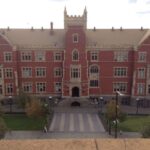

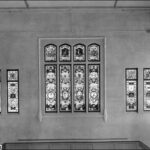
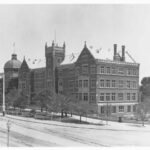
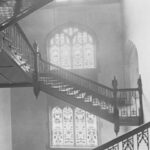
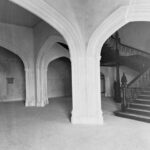
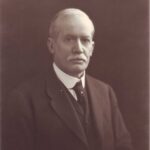
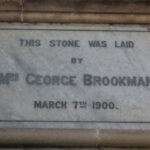
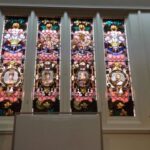
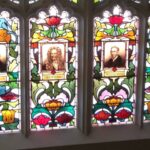
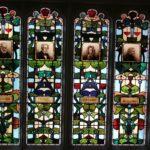
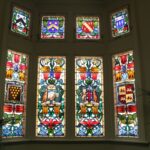
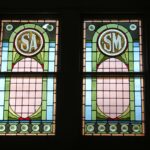
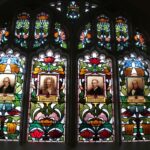
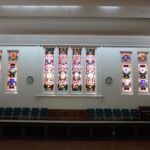

Comments
7 responses to “Brookman Building”
Was there a building which had to be demolished for the Brookman Building to be constructed? What was it’s name and is there a photo.
I don’t know about that off the top of my head Dennis but we’ll look into it and let you know what we find.
Hi Dennis, it sounds like it was part of the Exhibition Building? Mentioned here: http://adelaidia.sa.gov.au/places/brookman-building but that doesn’t make sense as that building was demolished in 1962. ? ” The Brookman Building was the first purpose-built home of the South Australian School of Mines and Industries, was located on a site that was previously the eastern annexe of the Exhibition Building” https://en.wikipedia.org/wiki/Jubilee_Exhibition_Building.
Hope this helps
I dispute the assertion “long known as the Brookman Building”. It was always the “School of Mines Building”, or in later years “Adelaide Tech”.
George Brookman’s contribution (roughly 30 per cent. of the capital cost) was acknowledged by naming the great central hall “Brookman Hall”.
Brookman Building was a commercial establishment at 35 Grenfell Street, entirely occupied by sharebrokers, accountants and solicitors.
We’ve rephrased that section to address your concerns Doug.
Sure Was – it was the Jubilee Building which was a magnificent Building and SHOULD NOT HAVE BEEN DESTROYED.
another Dennis Grubb who went to Adelaide Technical School to the east – and still is still there as the UNISA
Thanks for updating Dennis